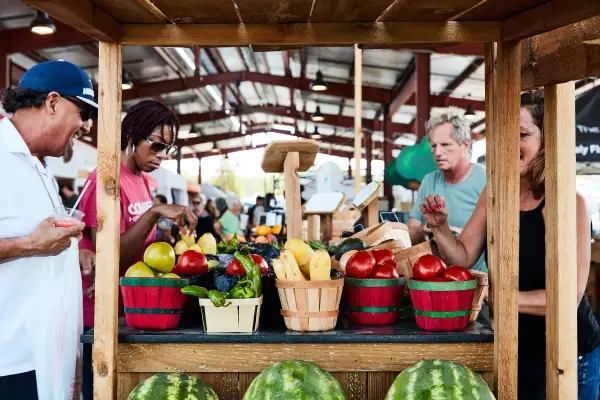Frisco, Texas

Gearbox Software president Randy Pitchford could have moved his video game company anywhere. But ultimately, the California native picked Frisco, Texas, a city 30 miles north of Dallas, as the site of the company’s new headquarters.
“I don’t regret it,” Pitchford says, reflecting on the 2015 move to Frisco from nearby Plano. “It’s actually been better than we expected.”
Pitchford is not the only one picking up and moving to the north Texas city. A sleepy bedroom community of 6,500 people as recently as 1990, the city today houses around 180,000 residents. Jobs are projected to grow by nearly 15% over the next four years, according to Moody’s Analytics, and companies from T-Mobile to Oracle have offices in the city.
Frisco’s growth, while impressive, is not necessarily unusual for Texas. The state has grown by 3 million people since 2010, more than any other in the U.S., while its local economies are going strong. “Job growth is expanding in Texas as fast as anywhere,” says Susan Wachter, a professor of real estate at the Wharton School of the University of Pennsylvania. “Firms are moving to provide jobs where houses are affordable, and people are moving to jobs where the cost of living is not high.”
But growth alone is not what makes Frisco the best place to live in America. Rather, it’s the way the city has translated its growth into a higher quality of life.
“The mentality here is, Let’s build the place we all want to have fun in and live in,” says Pitchford. While the company considered going as far as Quebec, “by every metric we had, Frisco came out on top,” Pitchford says.
One of those metrics: Frisco’s outstanding public schools. With more than 70 campuses, the Frisco Independent School District has the highest graduation rate of all the cities and towns Money evaluated this year.
“I can afford private, but the public school system here is so great,” Pitchford says, citing the district’s career training center, which offers high school students the opportunity to gain real-world experience in specialized programs from hospitality to health science.
Like many Frisco institutions, the schools have benefited from a city focus on public-private partnerships — arrangements that bring high-level sports, art and technology to the Texas town.
Take the Ford Center at The Star, an indoor athletic facility where the Dallas Cowboys have practiced since 2016. It was built as a partnership between the team, city government and the Frisco schools — so when the Cowboys aren’t using the indoor field, high school teams get it for practice and games. It’s a model that began in 2003, when the city partnered with two business groups to build Dr. Pepper Ballpark, now home to the Frisco RoughRiders baseball team.
Local officials have worked similarly with Drive.AI, a California-based self-driving car company, to bring driverless car testing to Frisco — a project the city hopes will ease transit for residents while boosting business in Frisco's entertainment district.
For all of Frisco’s growth, there are trade-offs. Christie Smith, who moved to Frisco 10 years ago, says she is glad she bought a home when prices were lower. In the first quarter of 2018, the median home price reached $349,000. That may sound cheap to some coastal readers, but it's well above the median U.S. home price.
“Frisco does not have the same affordable homes anymore,” Smith says. “We’re glad we got in when we did.”
Still, Smith says, the growth has done more good than bad to the community. When she moved to the area with her husband in 2008, she says, Frisco’s most notable landmark was an IKEA. Now, she adds, between concerts, games and charity runs, “you could be doing something every night of the week." — Shaina Mishkin
